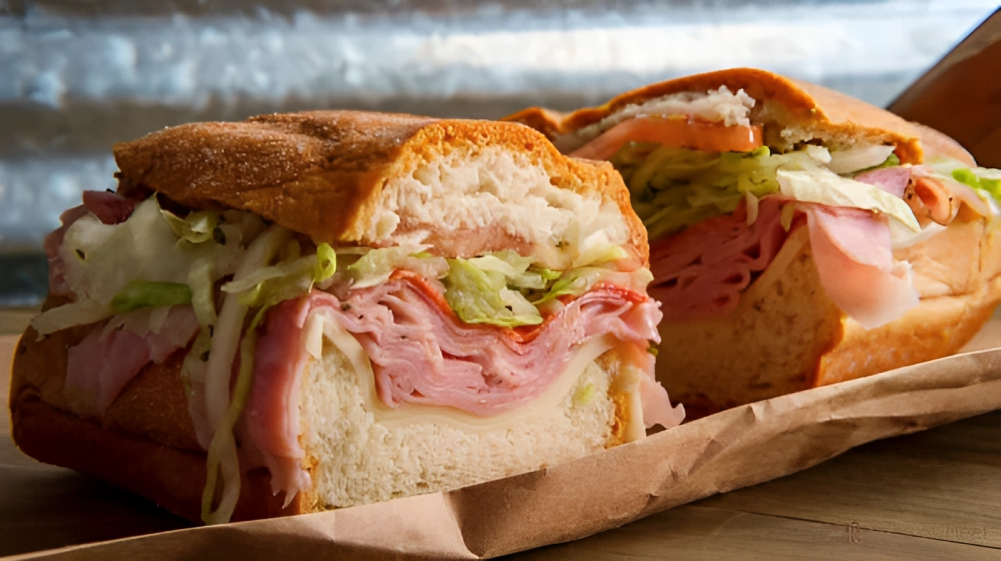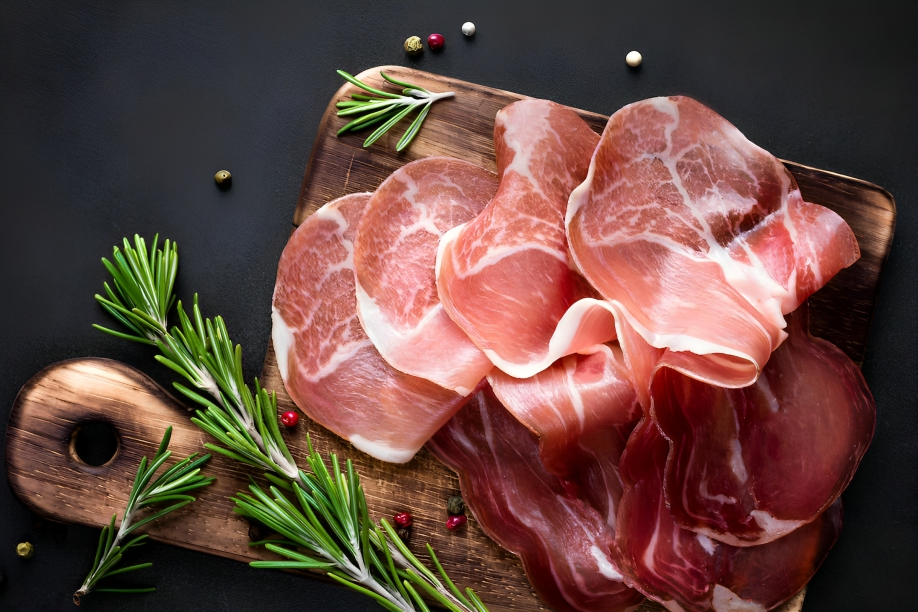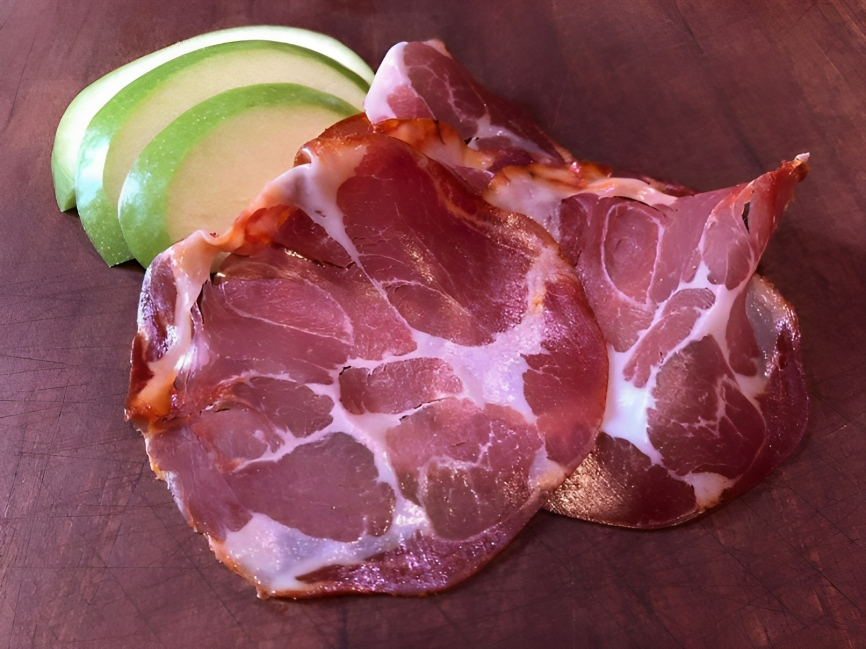Cappacuolo or Capicola: What is it, and Everything a Food Enthusiast should know about this Pork
You can almost see it. A world of salty and savory, rich marbling with light dancing spice; a life where every bite takes you to Italy in the sunshine. That, my friends, is what the world of cappacuolo (capocollo) looks like. In carving out a place in the annals of Italian culinary history, this iconic cured meat has appeared on plates, between slices of bread, and hidden deep within our hearts. But have you ever stopped to wonder: Just what is cappacuolo, and how does it differ from its near relative the Prosciutto? Don’t fret, gastronome! This blog will guide you through the delicious world of this Italian marvel.
What is Cappacuolo or Capocollo?
-
 credit-masterclass
credit-masterclass
The English word cappacuolo, from the Latin caput colli (head of collarbone), is a dry-cured Italian sausage made with shoulder pork and neck meat. Also known as capocollo or coppa, it has a rich marbled consistency and salty flavor. In contrast, it is cured cold for a few months with spices such as black pepper cloves and coriander to create an explosion of flavor that virtually screams.
What is cappacuolo made of?
Pork is the cornerstone of a good cappacuolo. Pigs raised on acorns and grains have traditionally been preferred because their flesh develops a deeper, nuttier flavor. The cut is from the pork shoulder and neck, a well-worked muscle whose meat has great marbling (and that satisfying meltiness). Just salt, black pepper, coriander and clove or fennel (sometimes added) play a complementary role in helping to preserve the meat while also enhancing its natural savoriness.
How Is Cappacuolo Made?
-
 credit-meat smoking for beginners
credit-meat smoking for beginners
From farmyard to antipasto platter–it’s a long, slow road.
Here’s a glimpse into the magic:
- Selection: The best cuts of pork are chosen, then marbled and tenderized.
- Salting: The meat is salted heavily to reduce moisture and kill bacteria.
- Spicing: The meat is rubbed with a fragrant black pepper, coriander, and clove mixture to flavor it.
- Curing: The salted, spiced meat goes on a months-long curing process in cool and dry surroundings where the flavors fuse.
- Aging: According to the desired texture and flavor, it may be aged several more months as a Cappacuolo.
- Slicing and Serving: Lastly, it’s sliced thin and served. The aged Cappacuolo is a treat for your taste buds.
Are There Differences Between Capicola and Coppa?
-
 credit-prince meat
credit-prince meat
Technically, no. Capicola and Coppa are just regional variations on the same cut and preparation. Thus, if you see either Coppa (in Emilia-Romagna) or Capicola (in Calabria), prepare yourself for a similar taste.
But, What Does Cappacuolo or Capocollo Taste Like?
Picture a perfectly roasted pork shoulder, flavored with the salted embrace of curing and spiced up nice for dancing. For each bite, there’s a zestful interplay between flavor and slight sweetness complemented by the buttery marbled fat. Unlike its counterpart, prosciutto is far bolder and earthier. Cappacuolo has a strong saltiness to it with slightly spastic flavoring.
5 ways to serve cappacuolo (Dishes finger-licking good)
- Classic Sliced Appetizer: This is pure, unadulterated Cappacuolo joy. Cut the meat into thin slices and plate with olives, pickled peppers, marinated artichokes, and crusty bread. The tangy bites will complement the salty richness of the cappacuolo beautifully, making it a surefire crowd-pleaser for starters.
- Panini Powerhouse: Take your lunch break to a higher level with a Cappacuolo and provolone Panini. Place Thinly cut meats on crusty Italian bread, add some peppery arugula for spice, and sprinkle with a little olive oil and balsamic vinegar. Press until golden brown and melty. The two differing textures and flavors will make a duet on your palate.
- Pasta Perfection: Bring your ordinary pasta to the next level with a hint of Cappacuolo. Chop the meat finely and fry with garlic and olive oil until slightly browned. Toss it with cooked pasta, chopped tomatoes, and fresh basil for a quick batch of richly flavored punchy grub.
- Pizza Paradise: Cappacuolo makes pizza night a gourmet affair. Then put thin slices of the meat on top, followed by other ingredients such as mozzarella cheese, roast peppers, and so forth. With the Cappacuolo’s peppery brine enhancing everything else, you can be sure to go for a second slice (or two).
- Beyond the Plate: Traditional doesn’t mean limited to the cappacuolo. Toss it in or on your salad to add protein, sprinkle over deviled eggs for a tasty surprise addition, and even try adding some to your go-to frittata recipe. Unleash your culinary imagination.
Conclusion:
In addition to being a cured meat, Cappacuolo is an emissary of the Italian culinary experience. Its history, its flavors, and all of the ways it can be served make it an essential item for any gourmet kitchen. Thus, the next time you are in search of a truly special seasoning for your meals, be sure to remember Cappacuolo. Just waiting to take you on a journey of the Italian sun, flavor-filled villages, and one bite at a time.
FAQ:
-
Once sliced, how long does the cappacuolo last?
After being sliced, the cappacuolo must be refrigerated and wrapped tightly for 5 days.
-
Is cappacuolo healthy?
Although cappacuolo is delicious, it’s also extremely salty and fatty. Savor in moderation as part of a balanced diet.
-
Can I cook cappacuolo?
True, cappacuolo is ordinarily eaten raw, but it can also be cooked for a brief period to achieve various textures and flavors.
-
Where can I find some good cappacuolo?
The best and largest stocks come from artisanal delicatessens or Italian butcher shops.

















